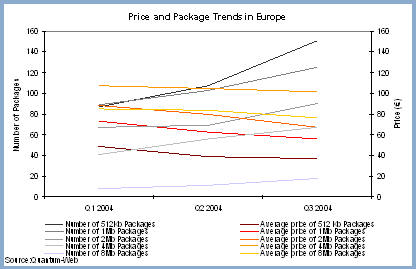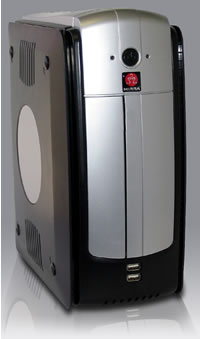There has been a rise in the amount of time people spend online, with the Internet now accounting for 20% of Europeans’ media consumption, according to research commissioned by the European Interactive Advertising Association (EIAA).
The Internet now represents 20% of European’s media consumption, above magazines (8%) and newspapers (11%) but below radio (30%) and TV (35%), according to the research.
The study was undertaken via phone interviews with 7,000 respondents in the UK, Germany, France, Spain, Italy and the Nordic countries between September and October 2004. Five hundred were interviewed in both Belgium and the Netherlands. The study was designed to quantify how people allocate their time across media in Europe and to gauge consumer perceptions of the Internet and the role it plays within their media selection.
The EIAA is a pan-European trade organisation for sellers of interactive media. Members are currently AdLINK Internet Media AG, AOL Europe, LYCOS Europe, MSN International, Tiscali, T-Online International and Yahoo! Europe.
Issues:
According to the survey, the Internet now accounts for 20% of European’s media consumption, up from 10% in December 2003. Almost half of all Europeans are now using the Internet with penetration rates ranging from 74% (Sweden) to 34% (Spain).
At 35%, TV continues to represent the lion’s share of the average European’s media consumption, followed by radio (30%), the Internet (20%), newspapers (11%) and magazines (8%).
Respondents generally perceived the Internet as a more pro-active media. Sixty-one per cent viewed it as a medium to “keep you ahead of the game” and half cited the Internet as their favourite source of information. Seventy per cent rated the Internet as “the best place to get what you want when you want it” and 80% described it as the “best time-efficient medium”.
These results compare with a separate study by the Online Publishers Association (OPA) in New York which showed that, for the first time in the US, content such as information services or entertainment became “the leading online activity as measured by share of time spent online”. Content surpassed other online activities such as communications, commerce and search.
Positions:
“We are witnessing a shift in how consumers are using the Web as broadband households continue to grow. Clearly, it is much more than a tool; it is a primary source of information, entertainment and fun,” said Michael Zimbalist, President of the Online Publishers Association.
“The Internet is now a rival to other media and with ‘always on’ and mobile technologies emerging, we can only expect this trend to continue,” said Michael Kleindl, Chairman of the EIAA.
The number of Dutch broadband connections (cable and ADSL) increased from 2.53 million on 30 June 2004 to 2.85 million on 30 September 2004. The penetration of broadband connections in Dutch households reached 40.4 percent on 30 September 2004 compared to 22.9 percent on 30 September 2003. ADSL increased market share to 54.7 percent and penetration per household to 22.1 percent. Cable continues monthly additions over 100,000, thanks to @home with 49,000 new customers. @home boosted its customer base to 409,000 and passed chello, while Wanadoo saw a seasonal dip in quarterly growth, continuing to stay the largest broadband ISP with 429,000. Het Net doubled net additions to 66,000, passing the 200,000 milestone in Q3 and becoming the fifth largest broadband ISP with 204,000 subscribers, behind chello with 379,600 and Planet Internet with 376,000.
European Interactive Advertising Association

 By 2009, consumers will require at least a 57Mbit/s Internet connection speed – up from today’s 3Mbit/s – to meet the demands of an ever-growing collection of always-on home media devices, according to research carried out by
By 2009, consumers will require at least a 57Mbit/s Internet connection speed – up from today’s 3Mbit/s – to meet the demands of an ever-growing collection of always-on home media devices, according to research carried out by